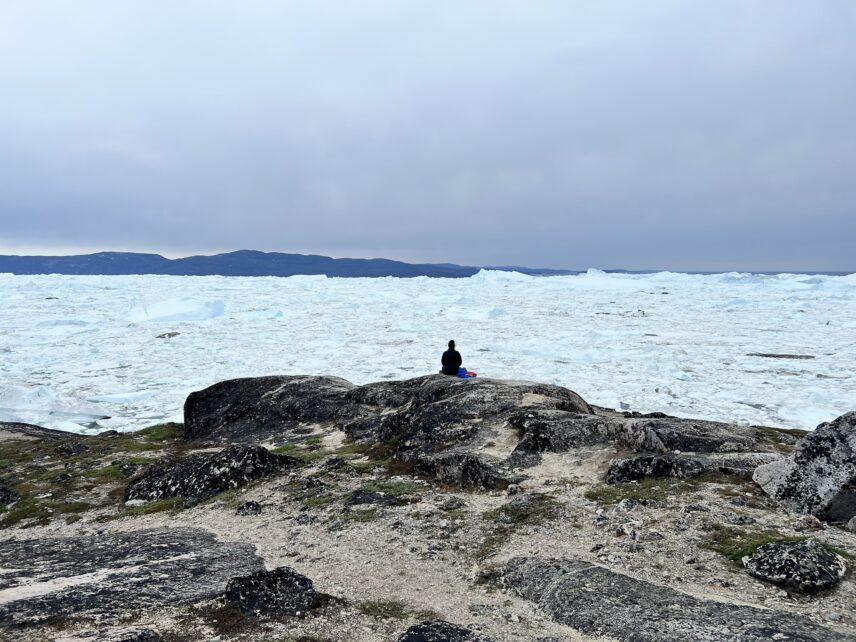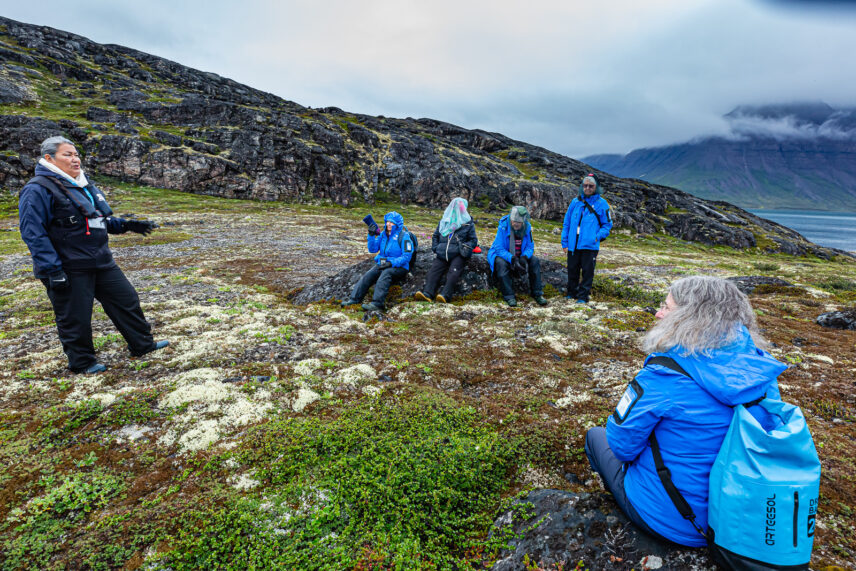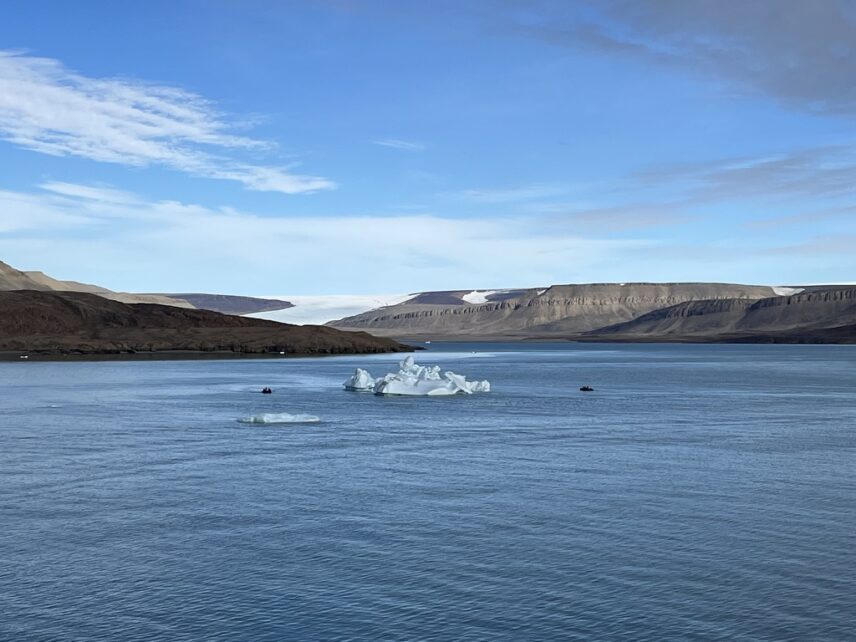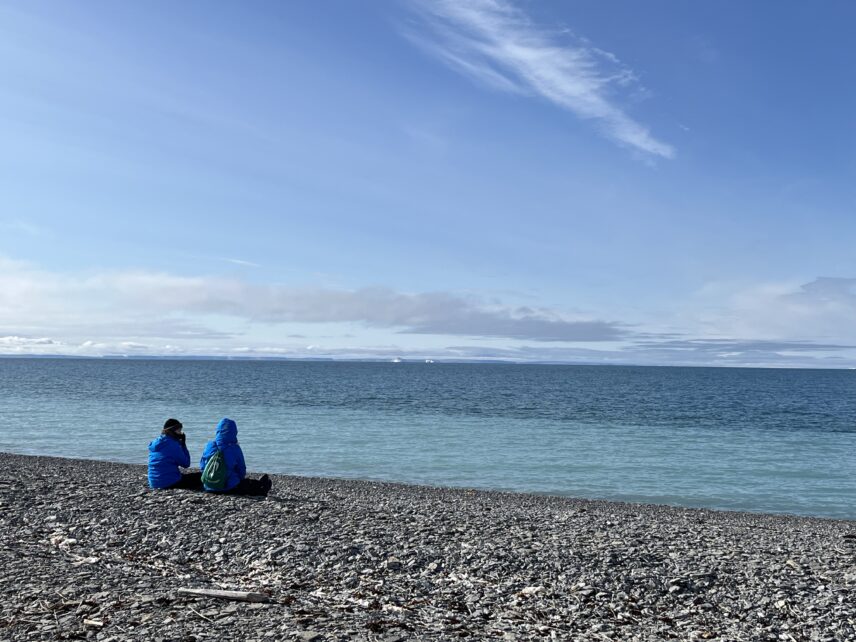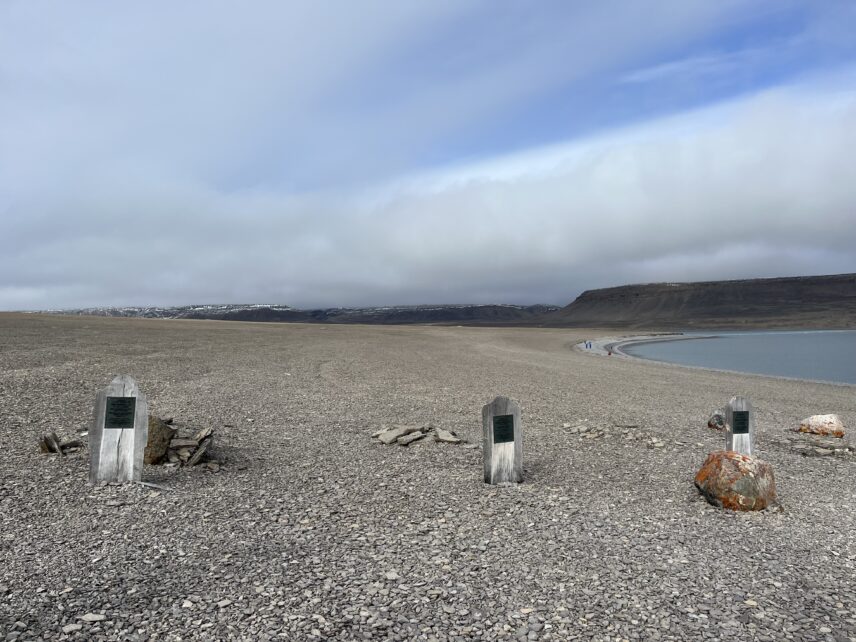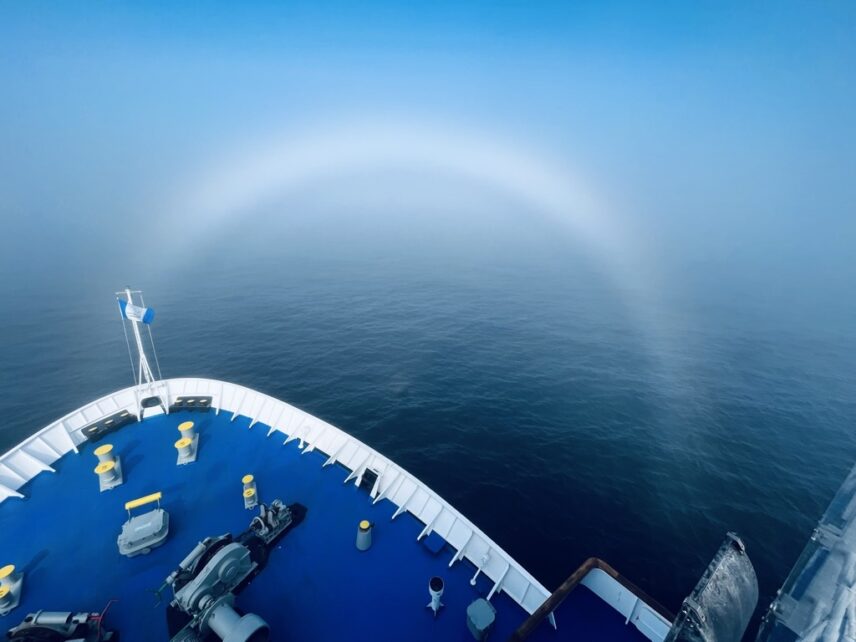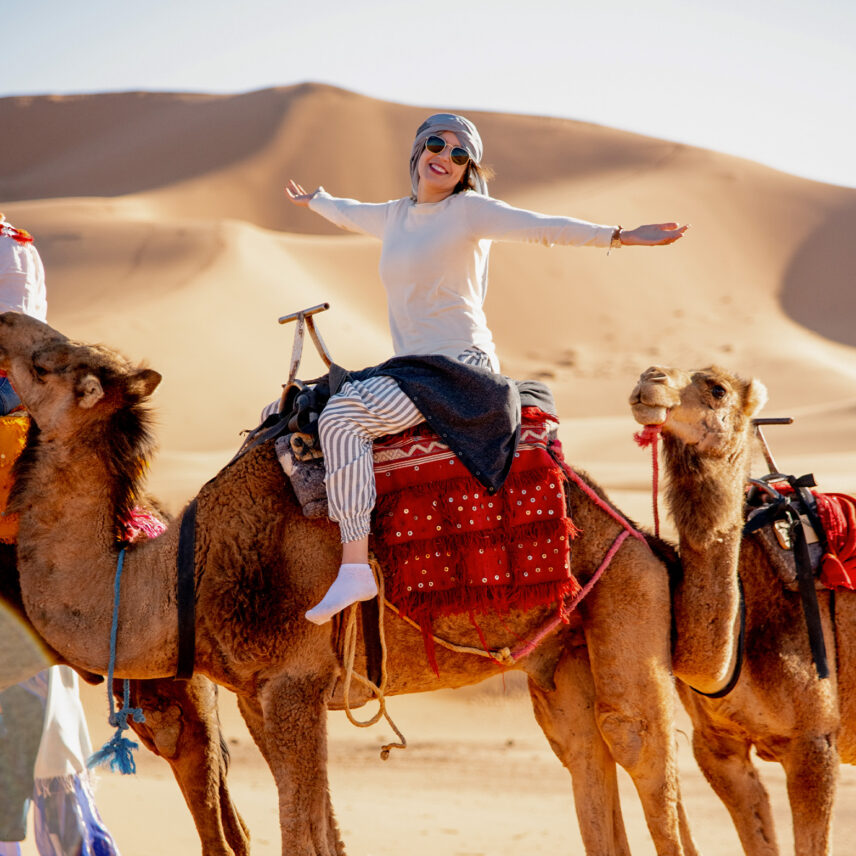The very mention of the Northwest Passage evokes layers of history and fearless navigation by early seafaring explorers. Skirting the northern edge of the Canadian shield, the slow transformation of the landscape comes as a surprise for those who take in the panoramas of sharp cliffs, mountain ridges, lowland pancake islands and abandoned outposts.

Wild Women Expeditions team member, Megan, found herself comparing her recent Northwest Passage experience to the Trans-Mongolian Railway. From St. Petersburg, Russia to Beijing, China, the distance between the two cities was a slow immersion in the ever-shifting landscape. By train or ship, spending more than two weeks in motion overland or overseas magnifies the distance. To travel into or out of the Northwest Passage, it’s a 17-day journey into the largely uninhabited and uncharted region. For Megan, it was the “nothingness” that changed her perspective. Time is suspended and the ocean swallows up the view. There are immense icebergs but the sea’s vastness has the stronghold.
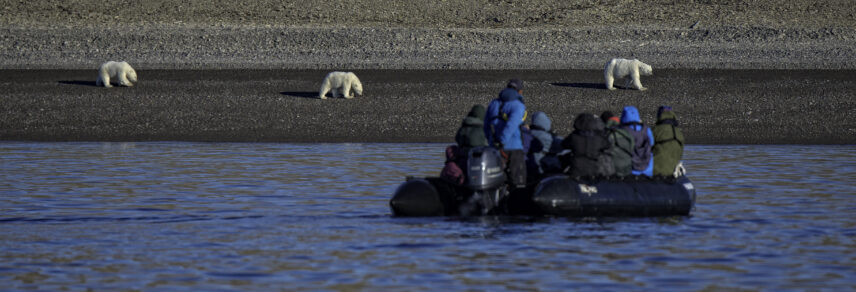
Photo: Denis Minty
Embracing New Horizons
Perspective shifts when there are no trees spiking into the horizon. Flora is diminished into tiny, resilient blooms underfoot. The scale of the natural world is both enormous and micro. It’s easy to feel the frisson that is deeply rooted in the expedition spirit. Days revolve around the surprise and amazement that come with unexpected wildlife encounters like the slippery white backs and dorsal ridges of a pod of belugas. Polar bear sightings from the safety of the ship can also alter the itinerary—an intended landing spot for a Zodiac and tundra hike can be trumped by a lanky bear who has already landed there!
Of course, nature is predictably unpredictable. While huddles of huge and noisy walrus are guaranteed, narwhals (the “unicorns of the sea”) can remain as elusive as spotting unicorns on land. Patience is a distinct part of the expedition mindset—as is anticipation, flexibility and the ability to pivot. And what could be better than pivoting to polar bears!
Continuing Education
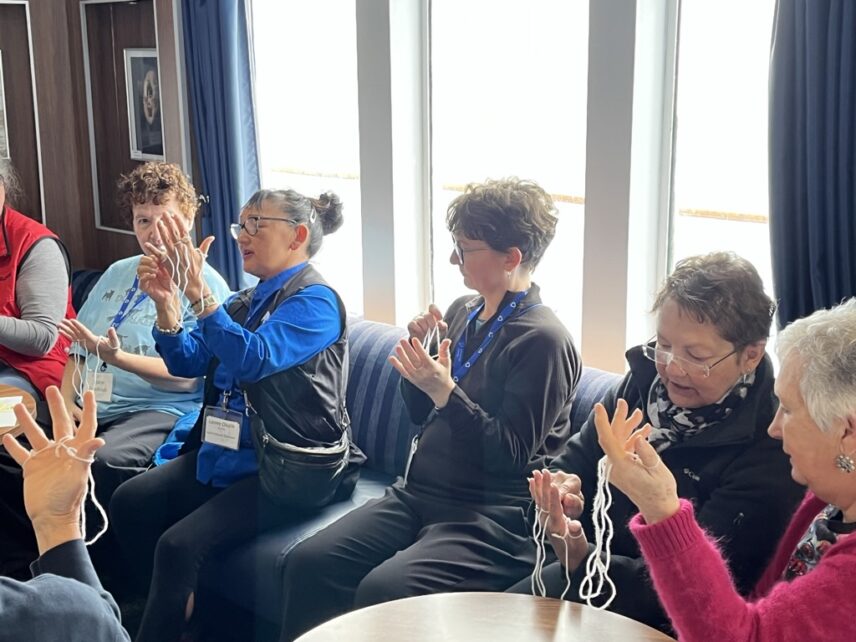
On board, there are daily workshops and opportunities to fully engage with Inuit educators, botanists and ongoing citizen science projects. While the Arctic provides a living open-air museum of curio and oddities, the Expedition Team are eager to share their knowledge about humpback behavior; the whalebone and sod houses built by the Thule, migratory birds and rock formations.
The Northwest Passage itineraries are new signature voyages for Wild Women Expeditions. The women who choose to join these navigations are as unique as the muskox, lemming, narwhals, flowering forbs, black crowberries, Arctic poppies and seashore chamomile daisies found in the North. Whether it’s a self-imposed writing residency, photography-driven decision or passion project that involves learning more about whales, Inuit culture or Franklin’s expedition, these trips are designed for freeform learning.
The Intrigue of the Northwest Passage
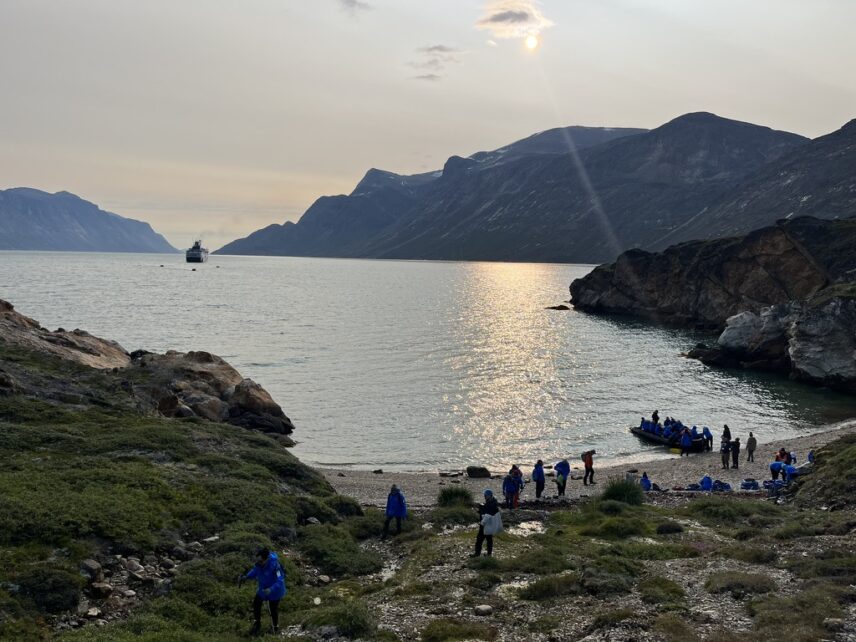
If you’d like to dig deeper into the permafrost, Wild Women community member Jan Balala recommends reading both Kabloona in the Yellow Kayak: One Woman’s Journey Through the Northwest Passage by Victoria Jason. Her initial attempt to kayak from Churchill, Manitoba to Tuktoyaktuk on the Beaufort Sea in 1991 with American adventurer Don Starkell and Fred Reffler was foiled. After Fred dropped out, Victoria paddled as far as Gjoa Haven where health complications forced her to stop. Don powered on but nearly died of frostbite and was rescued just short of their united goal. His version is chronicled in Paddle to the Arctic: The Incredible Story of a Kayak Quest Across the Roof of the World. Not one to sit idle and contemplate failure, Victoria became the first woman to kayak the Northwest Passage in 1994.
Jan Balala is not one to sit idle either! She will be joining the Wild Women crew on the inaugural Out of the Northwest Passage trip in 2025! Jan Balala is rather legendary. Like Susan Lucci’s 19 Emmy nominations and Liz Taylor’s eight walks down the aisle, Jan has been on 14 Wild Women Expedition trips. Fourteen! You can read more about Jan’s photography-based travels here.
I asked Jan what intrigued her most about the Northwest Passage. Her answer was immediate: History. “On the Wild Women Expeditions Antarctic expedition we had the rare opportunity to explore the Erebus and Terror Gulf (named for the two ships of explorer Sir John Franklin). What happened in the Northwest Passage? I want to know. This trip will also take me along the route of the final leg of Victoria Jason of Kabloona in the Yellow Kayak, the first woman to paddle the Northwest Passage. Perhaps we will get to stop in Gjoa Haven where she celebrated her accomplishment. What I’m most looking forward to is the opportunity to see the Northern lights. My bucket list has changed often, but the aurora borealis remains near the top of the list.”
Want to learn more about the Northwest Passage?
Boundless: Tracing Land and Dream in a New Northwest Passage by Kathleen Winter is the Wild Women staff pick to prep for the Passage! This memoir recounts Winter’s 2010 journey across the Northwest Passage. She paints a gorgeous journey of suspended days interspersed with captivating imagery, Inuit history and the internal conflict of traveling to such a remote and fragile place. Her reflections on the luminosity of the Far North are that of an artist–and her careful observations of the incandescent light, muskox bones, diminutive Arctic plants and shifting ice are precise and precious.
There’s lots to learn too about the Danish influence in Greenland, climate change, colonialism, and the embarrassing failed attempt at the Canadian government’s “Inuit Relocation Experiment.” You can almost hear the chorus of sled dogs that outnumber the human population. The weight of the RCMP’s ruins and the island graves of early explorers are true “wrinkles in time” just like the rocks below. The land of two names is intelligently introduced from all angles–from its mineral depths, colonial ties, sovereignty battles, military interest, explorer graves and polar bears.
The magnetic pull of the Northwest Passage is a powerful force–it comes palpably alive in the powerful words of writers like Victoria Jason and Kathleen Winter.
At the roof of the world, nothingness becomes everything and the predictably unpredictable days create a brand new story, one that belongs only to those who experience the infinite magic of it.
